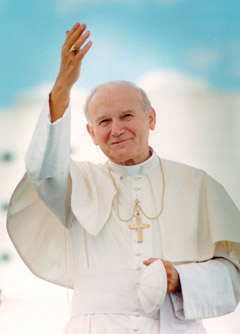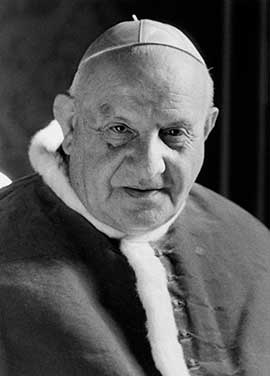Sunday, 20th April A.D. 2014
Easter Resurrection Sunday
ALLELUIA!
JESUS ROSE FROM THE DEAD!
ALLELUIA! ALLELUIA!

Holy Gospel of Jesus Christ according to Saint John 20:1-9. On the first day of the week, Mary of Magdala came to the tomb early in the morning, while it was still dark, and saw the stone removed from the tomb. So she ran and went to Simon Peter and to the other disciple whom Jesus loved, and told them, "They have taken the Lord from the tomb, and we don't know where they put him." So Peter and the other disciple went out and came to the tomb. They both ran, but the other disciple ran faster than Peter and arrived at the tomb first; he bent down and saw the burial cloths there, but did not go in. When Simon Peter arrived after him, he went into the tomb and saw the burial cloths there, and the cloth that had covered his head, not with the burial cloths but rolled up in a separate place. Then the other disciple also went in, the one who had arrived at the tomb first, and he saw and believed. For they did not yet understand the scripture that he had to rise from the dead.
* * *
My brothers and sisters in Christ! May the joy and peace of the Lord Jesus fill all your hearts on this beautiful Easter Sunday that commemorates the glorious Ressurection of the Lord Jesus.
As many of you are aware, Easter is the principal feast of the liturgical year. Pope Leo I called it the greatest feast (festum festorum), and said that Christmas was celebrated only in preparation for Easter.
You may wonder why Easter is the greatest of all feasts celebrated during the liturgical year? It is because it commemorates the marvellous Resurrection of the Lord Jesus on the first day of the week. Based on the testimonies of "over five hundreds" [1 Cor. 15:5-8] believers who have witnessed the Resurrection of the Lord Jesus, it cannot be denied that "the Lord has risen indeed." [Lk. 24:34]
On the Feast of Easter, we commemorate the most important turning point in the history of mankind. We honour the fulfillment of the "blessed hope" of every living being, "the manifestation of the glory of our great God and Saviour, Jesus Christ." [Tit. 2:13] At that moment, when the fullness of time had arrived, all the faithful believers of the past, present, and future, received the free gift of salvation through the grace of God.
In order to appreciate the glorious Resurrection of the Lord Jesus, we have to consider what the outcome would have been if there had been no resurrection. Saint Paul summarizes this subject in the following words:
"Now if Christ is proclaimed as raised from the dead, how can some of you say there is no resurrection of the dead? If there is no resurrection of the dead, then Christ has not been raised; and if Christ has not been raised, then our proclamation has been in vain and your faith has been in vain. We are even found to be misrepresenting God, because we testified of God that he raised Christ - whom he did not raise if it is true that the dead are not raised. For if the dead are not raised, then Christ has not been raised. If Christ has not been raised, your faith is futile and you are still in your sins. Then those also who have died in Christ have perished. If for this life only we have hoped in Christ, we are of all people most to be pitied." [1 Cor. 12-9]
"But in fact Christ has been raised from the dead, the first fruits of those who have died. For since death came through a human being, the resurrection of the dead has also come through a human being; for as all die in Adam, so all will be made alive in Christ." [1 Cor. 20-2]
In fact, Christ has been raised from the dead! He was not only raised from the dead to prove to us that He is God; He was raised to prove to us that "we will not all die, but we will all be changed, in a moment, in the twinkling of an eye, at the last trumpet. For the trumpet will sound, and the dead will be raised imperishable, and we will be changed. For this perishable body must put on imperishability, and this mortal body must put on immortality. When the perishable body puts on imperishability, and this mortal body puts on immortality, then the saying that is written will be fulfilled: 'Death has been swallowed up in victory.' 'Where, O death, is your victory? Where, O death is your sting?'" [1 Cor. 15:52-5; Is. 25:8]
My brothers and sisters, as we have heard from the Second Reading of the Letter of Saint Paul to the Colossians, because we have been raised with Christ, we should seek the things that are from above, where Christ is, seated at the right hand of God. We should set our minds on things that are above, not on things that are on earth. For we have died in Christ, and our new life is hidden with Christ in God.
For us Christians, Easter Sunday is a day of joy. It is a day of joy because of the new life that we have received in Christ through the Sacrament of Baptism. It is a day of joy because we have new brothers and sisters in Christ who have come home by receiving the Sacrament of Baptism. It is a day of joy because it is the time of the year when many, after having been absent for some time, return to Jesus through the Sacraments of Confession and the Holy Eucharist. It is a day of joy when in the perfect unity of the Mystical Body of Christ, all the saints and angels of Heaven rejoice with us because "The Lord has risen indeed." [Lk. 24:34]
On this beautiful Easter Sunday, our joy in Christ is manifested many ways. It is manifested through our presence at the celebration of the Holy Mass during which time, with all our hearts, we praise our Lord Jesus Christ in thanksgiving. It is manifested in the warmth of the homes where family members and friends have been invited to a great feast of excellent foods. It is manifested in the laughter of the little children who will be provided with the opportunity to play games with their parents, be it searching for coloured eggs or other games. For some children, this special relationship with their parents is a rare opportunity because sometimes during the year, we forget to make ourselves little so we can share in the joy of our little ones.
In the midst of all this outward joy that we are celebrating, let us not forget those who's joy is inward. There are those who are sick in the hospital, the prisoners who have been forgotten, those who's countries have been torn apart by warfare, the seniors who live in solitude, all those who share in our joy in their own way. Our Lord is also their Lord. Inwardly, they also share in the joy of knowing that the Lord has indeed risen.
My brothers and sisters in Christ, the glorious Resurrection of our Lord Jesus Christ, witnessed by hundreds in the early days of the Church, is our proof that one day we will all be united as one eternal family. This life is temporary. What awaits us is so much better and greater. Until we reach that day, let us live the joy of Easter with all our brothers and sisters in Christ. Let us make a special effort to reach out to those who do not share in our joy and especially those who have been forgotten so they may manifest their joy outwardly as we are doing today. As of today, may you all go forth in the Spirit of Christ and bring the joy of the Lord to all those who touch your lives!
The Mass will be celebrated by bishop c. Raphael Zimer at
12:00 PM SLT in Saint Francis Cathedral


























